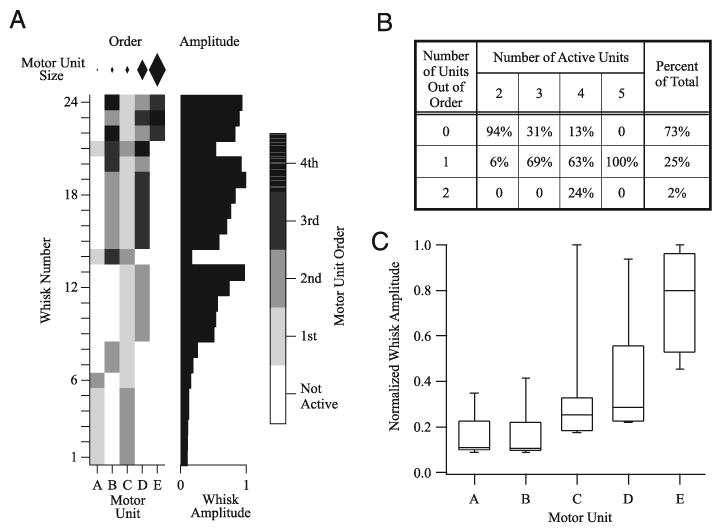FIG. 5.

Recruitment order vibrissa motor units. A: behavior of 5 motor units (abscissa) isolated from EMG recorded during 24 whisks (ordinate). Diamonds at the top represent the relative peak-to-peak amplitudes of the motor units. Left panel (“Order”) depicts, in gray scale, the recruitment order of the motor units. With the exception of unit B, motor units were recruited according to their motor unit action potential (MUAP) amplitudes in 23 of 24 whisks. Right panel (“Amplitude”) plots the normalized amplitude of each whisk: larger whisks are associated with recruitment of additional and larger units. B: summary of motor unit recruitment order for 73 whisks. Motor units were recruited according to the size principle in the majority of whisks (73%). Only 25% of whisks had a single motor unit recruited out of order and only 2% had 2 units out of order. C: relationship between the size of a motor unit and the corresponding whisk amplitude for 73 whisks. Larger motor units were associated with larger-amplitude whisks. Median whisk amplitude is indicated by a line within each box. Box lower and upper limits represent the 25th and 75th percentiles of whisk amplitudes, whereas the whiskers encompass the 10th and 90th percentiles.
